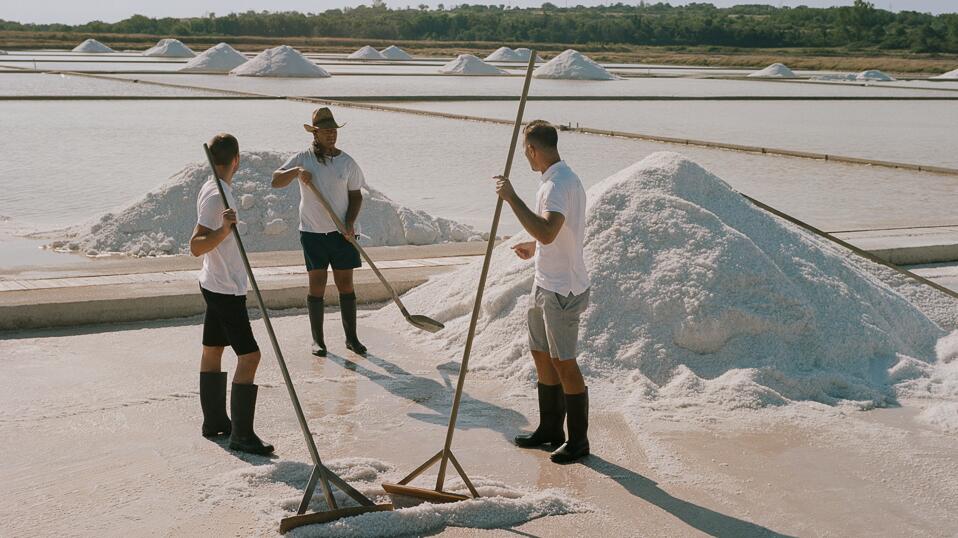The salt marshes of Croatia feed a rich culinary offering, with “white gold” seasoning everything from the soil in ancient olive groves to the area’s award-winning cheeses
19 October, 2022

Read the full story in Vol. 38: Flavour.
A
cloud of dust billows in our wake as we crest a hill. The
island of Pag, a grizzled finger of ashy karstic rock just off the
northern coast of Dalmatia, stretches cinematically in front of us.
A narrow ridge of land lies below: on one side, the mineral-blue
sheen of the Adriatic’s Velebit Channel; on the other, a watery
latticework of salt flats that make up Solana Pag.
Salt might be the most crucial agent of flavour we have on our
tables today, but in days gone by it was the difference between
being hungry or being fed. One of the pivotal developments in
civilisation, its discovery as a food preservative during the early
years of the Roman Republic elevated it from commodity to valuable
currency – it was used to pay soldiers (hence the word “salary”),
as well as exchanged for gold. Cut to centuries later, and the
Venetian Empire – the whole economy of which was built on the salt
trade – monopolised all saltworks along the Adriatic coast,
including Solana Pag, which became responsible for more than 10 per
cent of the empire’s entire economy.
Solana Pag is still Croatia’s largest sea salt producer, its
salt certified by the EU as a protected designation of origin (PDO)
product – a type of geographical indication aimed at preserving the
origin of foodstuffs. Here, the bura, a powerful northeastern wind,
the island’s barren landscape and its high number of annual sunny
days combine to create a unique, slightly sweet-tasting salt.
“There’s no official school to teach our trade, so all our
skills are passed down intergenerationally,” explains Sanja
Stamenić, a manager at another ancient saltworks, Solana Nin. She
runs a handful of salt through her fingers. “Most people who work
here have learned the skills [to harvest salt] from their father or
grandfather. Each and every grain we produce has been through
someone’s hands. We harvest our product in exactly the same way the
Romans did, with sun, wind and patience.”
Discover more stories from the Flavour issue here.
Plan your visit to Croatia at secretdalmatia.com